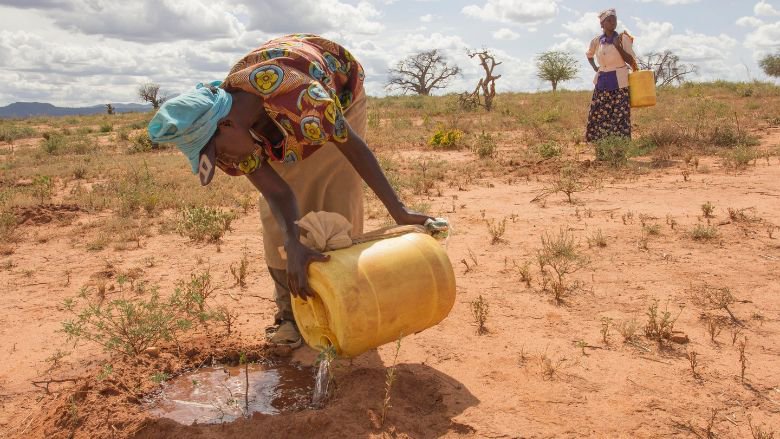Why the GCRP
Developing countries face an increasingly complex risk landscape, marked by interconnected hazards and compounding risks that threaten to roll back development gains and undermine efforts to achieve the Sustainable Development Goals, end extreme poverty and promote shared prosperity in a sustainable way. The likelihood of polycrises or compounding crises increases as interacting risks events compound one another, resulting in impacts that greatly exceed the sum of each part.
Such events include the uneven recovery from COVID-19, Russia’s invasion of Ukraine, inflation, natural and climate-related disasters, and more. Taken together, these compounding risks raise the level of food, energy, supply chain and livelihood insecurity worldwide, while challenging effective short-term responses and long-term resilience strategies.
Recognizing the risks that crises pose to core development challenges, the World Bank (WB) established the Global Crisis Risk Platform (GCRP) in 2018. The primary objective of the GCRP is to strengthen the Bank’s ability to provide a coherent and strategic approach to identifying and mitigating compound risks in developing countries before they turn into full-blown crises.
The GCRP Secretariat is housed in the Fragility, Conflict, Violence (FCV) Group.
What we do
GCRP’s focus is on the interaction of macro-financial shocks, natural hazards/climate change, conflict and fragility, food insecurity, and health risks. It gives priority to the most vulnerable and fragile contexts, where institutional and financial capacity to address these risks is limited.
The GCRP monitors, analyzes, and shares knowledge on these compound risks and crisis preparedness to support WBG operations, in alignment with its Green, Resilient and Inclusive Development (GRID) approach and Global Crisis Response Framework (GCRF).
Decision-making in complex contexts such as compound crises requires collaborative approaches. GCRP therefore promotes knowledge sharing and collaboration across different Bank units and with external partners on compound risks and crisis preparedness.
How we deliver
GCRP’s priorities are built on three strategic areas:
1. Compound Risk Monitoring and Analytics
- Enhancing the Bank’s internal toolkit for monitoring compound risks through the Compound Risk Monitor. This real-time risk monitoring system tracks ongoing or near-term threats across six dimensions of risk: natural hazards, conflict and fragility, macro-fiscal, socio-economic vulnerability, food insecurity, and health.
- Deepening the Bank's knowledge and understanding of compound risks, including through strengthening partnerships with different research institutes and organizations (see for example Understanding Compound Events in Fragile Contexts: Insights from Ethiopia and Kenya).
- Contributing to the body of knowledge on how to operationalize seasonal forecasts for decision-making (see for example Operationalizing Seasonal Forecasts into Decision-Relevant Risk Metrics: Country-Level Seasonal Threat Profiles).
2. Crisis Preparedness in Vulnerable Countries
- Compound risks and complex crises require stronger attention to enhancing preparedness for a variety of crises. Investing in crisis preparedness helps reduce the potential impacts of crises and enables timely and effective crisis response efforts, ultimately reducing impacts on people and economies.
- The Crisis Preparedness Gap Analysis (CPGA), developed by the GCRP Secretariat, seeks to help countries identify challenges and opportunities for strengthening preparedness across sectors and for different types of shocks. The CPGA is the first cross-sectoral assessment of countries’ capacity to prepare for and manage shocks. It provides a holistic and high-level cross-sectoral view of preparedness for different crises, identifies gaps and subsequent entry points to prioritize targeted technical and financial support; and informs the Bank’s country engagement products. It reviews elements of preparedness that are relevant for any type of shock, both shock-agnostic (such as the ability to deploy support to vulnerable households through social protection programs) and shock-specific (such as disease surveillance capacities or disaster early warning systems).
- Under IDA20, crisis preparedness is for the first time highlighted as a policy priority, with a commitment to integrate crisis preparedness support in all country programs across IDA countries. The GCRP supports this priority by coordinating the delivery of the CPGA across IDA countries. To date, CPGAs have been delivered in Lao PDR, Malawi and Uganda and deliveries are ongoing in Nepal, Maldives, and Tajikistan.
3. Knowledge Generation and Sharing on Climate Change and FCV
- Beyond promoting knowledge sharing and collaboration within and outside the Bank on compound risks and crisis preparedness at large, the GCRP has a specific focus on the interactions between climate change and FCV.
- This includes (i) developing a framework for FCV-sensitive climate action across different types of FCV settings, and (ii) generating new knowledge and partnerships to identify barriers and entry points for channeling adaptation finance in FCV settings.
